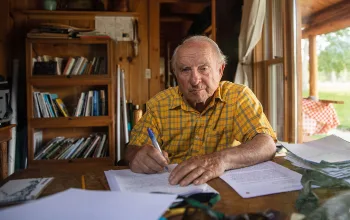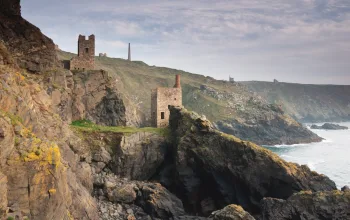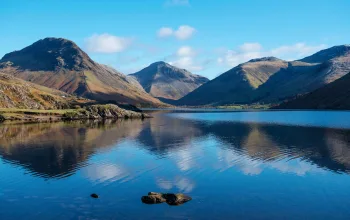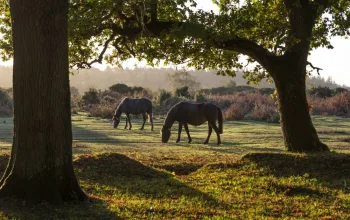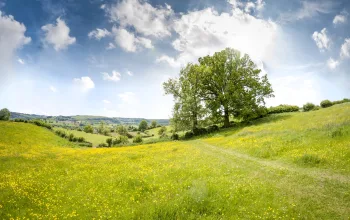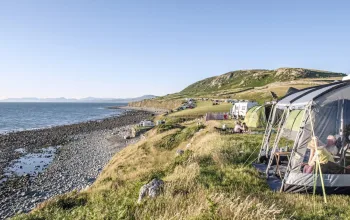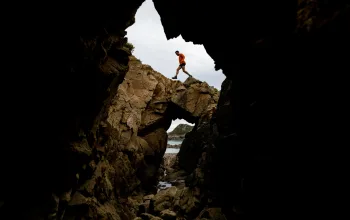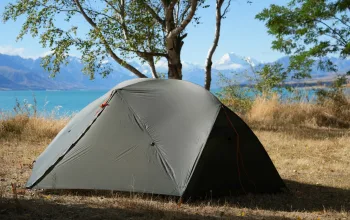This means we need to control the camera’s shutter speeds. A faster shutter speed to freeze movement, slower shutter speeds to accentuate it. Most fully automatic compact cameras don’t allow you to choose a particular shutter speed, but lots have a scene mode, usually with a picture of a runner or something similar. [A pic here of symbol maybe] Symbols like this when chosen will force the camera to pick the fastest shutter speed it can in the circumstances. Great for shooting in good light, school sports days, your dog in the park playing ball etc and increasing your chances of getting a nice sharp shot of the moving world around you.
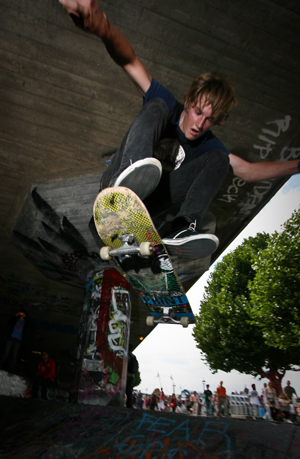 “What if there is little or no light?”
“What if there is little or no light?”
When light levels drop, your camera, even in one of the sports modes, will struggle to pick a fast enough shutter speed to freeze the action. So we need to do one of two things to affect the outcome. First option is to increase the cameras ISO setting; this is the sensitivity of the sensor inside the camera and is denoted by a scale of numbers, 100,200,400 etc all the way up to usually 1600. Every time you jump up to the next higher number the camera is doubling the sensitivity of the chip, enabling you to take pictures in lower and lower light. Our second option in diminishing light is to use the cameras built in flash. This has fairly limited range, and most built in camera flashes only illuminate a couple of metres in front, so don’t go expecting it to light enough to shoot a football match, but it’s a great technique if you can get close enough to the activity. Your flash has the advantage of shooting at a very high speed so it is capable of freezing even the fastest of action, i.e. a table tennis match.
“I sometimes find the camera seems to take an age to take the shot when I press the button”
This is called shutter delay and is a side affect of the way most compact cameras work and can be very frustrating when shooting fast moving action. It can, however be lessened enormously with a little known technique called focus lock. The main reason your camera takes a long time is it is spending the time focussing prior to actually firing. Focus lock requires a little practice at first but is soon mastered. You need to point your cameras focus square at something approximately the same distance you predict you will be from the subject, and gently half press the shutter release- you will generally get some form of confirmation that the camera has locked on. Keeping your shutter half pressed like this, get yourself lined up for the shot, and you will find that when you now press the button all the way down to take your picture, any delay should be dramatically reduced.
“I am comfortable with these techniques, what about taking things a step further?”
If action photography- and this can encompass sports and wildlife as well as family activities- is your thing, then maybe it is time to migrate upwards to a camera that allows you more specific control over things like shutter speeds , apertures ISO etc. Digital SLR’s- these are cameras that allow you this level of control, but also allow you to change lenses for specific tasks i.e. telephoto or zoom lenses for long distance subjects
or super wide angles to allow you to get in amongst the action. Your learning curve will be steeper but the end results will be correspondingly more rewarding as long as you put the effort in. But even with a simple digi-compact great results can be had with a little experimentation. Try shooting with the flash set to fire all the time even in broad daylight, this can give great eye-catching results as long as you are close to the subject. Try slower shutter speeds and following the subject on the screen whilst taking the shot, this is called panning and done well will give you a sharp subject against a pleasingly blurred background, something motor racing photographers do all the time. Get down low to the ground and shoot upwards to give a sense of drama to your shots and to isolate them against an uncluttered sky- your built in flash will be useful here.
“Have you any final tips to help me shoot action”
I find the best way to picture any activity, is to get to know that activity. If you want to shoot, say BMX or Motorcross, it helps to know the subject matter really well, this way you will understand the nuances of your chosen sport, you will also get to know the best positions to put yourself in to get the shots you want. Its also worth photographing the candid shots that present themselves in the gaps between the action. Some of the best action photographers prize winning shots have been taken of the participants whilst readying themselves beforehand, or consoling themselves afterwards. And finally to give you inspiration check out the work of the famous doyen of action photographers Eamonn Mcabe to see how he elevated action photography to an art form during the Eighties.
Paul Duxfield
Paul Duxfield is from Cameras Underwater who specialise in underwater photography equipment


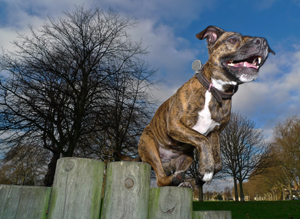 Easy Action Photography with Paul Duxfield
Easy Action Photography with Paul Duxfield

